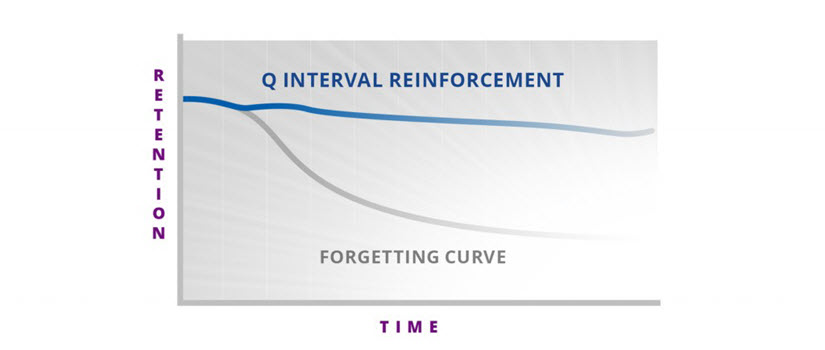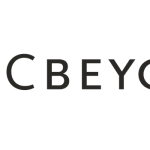
Sailing the Rough and Bountiful Sea of Subscription Learning
The Case of Eric Blumthal, Gordon Eilen, count5, and q.MINDshare™
Subscription Learning—using elearning to send learners short nuggets of learning-interactions spread out over time—is a relatively new phenomenon. As such, it is subject to the same learning curve that all new technologies entail. As a learning researcher/ consultant who has been heavily pushing the idea of subscription learning in keynotes and articles recently, I’m fascinated by the human side of this burgeoning field. It’s thrilling to see new subscription-learning applications enter the learning field, but it’s even more interesting to explore the human aspect of invention and technology-dissemination.
Eric Blumthal, who along with his business partner at count5, Gordon Eilen, set out in 2004 to create a subscription-learning platform to help sales reps better use their valuable time. They’ve created something even more broadly applicable, but their story is instructive. Eric, who had years and years of experience as a sales guy—a former VP of sales—saw a need. Sales people would be pulled away from selling to learn a ton of information, but they’d soon forget it. What Eric saw was a broken model—and a waste of time and productivity—and a loss of sales! He thought—with little or no background in the science of learning—that what was needed was a “reinforcement strategy.” When he surveyed sales organizations, hardly any had a way to reinforce what was learned. They were all leaking knowledge!
What Eric and Gordon created—along with their team—was q.MINDshare, a subscription-learning reinforcement tool. But just like all innovations, q.MINDshare has morphed and improved over the years, now incorporating learning approaches that have proven to work with real employees. And they’ve expanded beyond sales people to provide value for customer service folks, field technicians, managers, supervisors, university students, and others.
q.MINDshare – How it Works q.MINDshare’s authoring tool is designed for non-technical subject-matter experts. The tool provides many types of interactions, including presentations, questions, videos, job aids, documents, animations, etc. They also have scenario-based open-ended question responses and then ask the learners to grade themselves. Soon they will have the capability to let learners record what they are going to say. Nuggets can be tagged with variables—for example different learning goals—and information on the learner’s progress toward these variables can be displayed to learners and provided for work-learning professionals and stakeholders on the business side as well. As an example, a Fortune 20 client of count5 uses q.MINDshare with about a dozen variables tied to the learning objectives of their training program.
From the learner’s perspective, they’ll get a notification on their computer, or phone, or tablet, which prompts them to engage in a short nugget of learning interaction.
While most people engage immediately, the system keeps track and feeds learners new nuggets only when they’re ready. Learners typically get some sort of question to test their understanding, and then several weeks later they get a follow-up question on the same topic. The schedule of questions depends on how well the learners do the first time they answer the question.
What Eric and Gordon have learned
Eric, Gordon, and company have learned a ton of stuff over the years. Eric first had the idea for a reinforcement tool way back in 2002 or 2003. They went to market with their system in 2005, and have been making refinements based on real-world application ever since. The following will describe some of what they learned.
Email doesn’t work that well
One of the most important things they’ve found is that people are so desensitized to emails and are so likely to ignore them that they had to invent a more potent push-technology delivery method. Specifically, they have found that they get 10-20% engagement with email pushes, but 90-95% engagement with their embedded push technology. They call this a “Cut-Thru Technology™” and refer to it as “The Q channel.”
Eric makes sure to preach the importance of using the Q channel ONLY for the really important stuff—to the organizations that count5 works with. For example, at one client, q.MINDshare is deployed to about 5,000 folks (soon to be about 25,000), but only about a dozen employees have privileges to send messages on the channel. These gatekeepers learn that keeping the channel clear of detritus is a key to keeping it valuable for employees. Indeed some companies have begun to use q.MINDshare for strategic messaging from their senior management—so that the messages get through.
The PC is still king
When people get notifications—pushed nuggets—through their PC’s, their engagement level with those nuggets is higher compared with those who get nuggets pushed to their smartphones and tablets. However, those who get nuggets pushed to both their PC and their smartphones show the highest engagement. Eric and I surmised that the PC is the most-work-focused device, whereas smartphones and tablets are often used for non-work activities. Of course, the technology landscape is always changing so the future may bring different patterns—and different user groups may have different profiles.
Prompting attention
While there are a number of interactive methods in use through q.MINDshare, even simple presentations of information are paid more attention because the learners know that they might be asked a question about the information later.
System design can lead to continuous improvement of the learning
Learners can favorite any item of content in a learning interaction. They can also rate each item using a three-star scale combined with their comments. Both of these tools not only boost learner engagement, but they also help count5 learn what works best and what needs to be improved.
In many instances, when work-learning professionals review the results for one of their Q-channel threads, they often will spontaneously create follow-up learning or create job aids on information that the learners don’t seem to be getting. This is phenomenal! It’s a system that prompts us—as work-learning professionals—to get good feedback on what we’re doing so that we can build continuous cycles of improvement into our practice. Using feedback to improve our learning products is freakin’ revolutionary, but it should be common practice.
Avoiding chapterization produces better learning
As Eric and count5 have deployed subscription learning, they’ve learned that interleaving topics produces better results than teaching one topic at a time (and never coming back to reinforce them). In the learning field, we too often use such a “chapterization” strategy, when we should be using an interleave strategy like that which count5 has found most effective. Interestingly, the research on learning suggests the same thing, showing once again that if you’re getting good feedback on real results of your learning interventions, you may find out what works without ever looking at the research. And of course, even if you’re following research-based practices (HIGHLY RECOMMENDED!) it’s still wise to verify the research recommendation with your own content and learners.
Augmenting traditional training and more
Originally, count5 started out to augment traditional training with follow-up reinforcement, but now Eric is pushing the concept of using q.MINDshare to provide stand-alone threads to convey learning content. His clients have also used it for prework (Eric calls it preinforcement) as well.
Creating significant learning (and financial) benefits
A huge financial services company was going through the chaos of mergers and their salespeople were not selling enough title insurance. The company provided the usual PowerPoint-dense training program and followed that up with two typical elearning programs for each of their sales reps. But in addition, they also decided to try q.MINDshare as an after-training learning reinforcement device.
Not everyone at the company was completely sold on the idea, so they decided to do what the smartest companies do. They provided q.MINDshare reinforcement thread for half the sales people, but not for the other half. Then they examined the results. Their learning folks came up with a competency test that was given to all their sales folks at the end of the q.MINDshare trial. The good news for Eric and count5 was that the sales reps that used q.MINDshare performed better on the competency test by 40%—and 80% when the easiest questions were eliminated from the analysis. More remarkable were the actual sales results. Each q.MINDshare rep sold more than $200,000 more than the non-q.MINDshare reps! And this wasn’t just a few learners. There were over 300 reps in the comparison.
But even as these numbers were giving Eric thrills, there were still questions from within the sales organization. One day, as Eric was regaling the Senior VP of sales about the results, they began focusing on the biggest sale of all—a plus-million-dollar sale by Lisa, one of the best sales people in the organization. The VP decided to call her up and ask her to come immediately to his office. When she arrived—surprised if not befuddled by the sudden call to attention—the VP asked her straight-up, did q.MINDshare make the difference in her getting her million-plus deal. She said, with some humble gravitas, that she was the one responsible for the sale—that she had long been one of the most productive sales people. She also told the story of what happened.
When she’d gone to the three-day training and then taken the standard elearning courses, she didn’t feel very confident that she could sell title insurance competently to her clients. She even made a conscious decision to avoid emphasizing it with her best clients. But then, when she began to get the q.MINDshare nuggets, her sense of competence rose. Perhaps just as importantly, after about a month of engaging the Q thread, and specifically after she had engaged a Q nugget earlier one day, she was talking on the phone to one of her biggest clients and decided to broach the idea of title insurance. The rest is the history of a million-dollar sale. As you might imagine, Eric Blumthal—sitting there in the VP’s office listening to this story—was floating with delight, seeing that years of hard work and innovation had paid off big time.
Will’s summary
Eric and Gordon of count5 are engaged in a cycle of innovation and creativity—specifically aimed at figuring out what works and what doesn’t in subscription learning. Their instincts about what might work have always been good, but now they are incorporating the latest research on learning (and spacing and feedback in particular) into their product designs. q.MINDshare is a potent subscription-learning product, worthy of our admiration. Eric and Gordon are years ahead of the field in many respects because they’ve done the hard work of trial-observe-improve, they’ve done it time and time again, and their work shows the results.
Note: This is a reprint of Dr. Thalheimer’s original article which can be found by clicking here. We have tremendous respect for Dr. Thalheimer, his research and his contributions to workplace learning. Find out more at http://www.work-learning.com
-
"q.MINDshare is a potent subscription-learning product, worthy of our admiration."
President, Work-Learning Research Inc.



